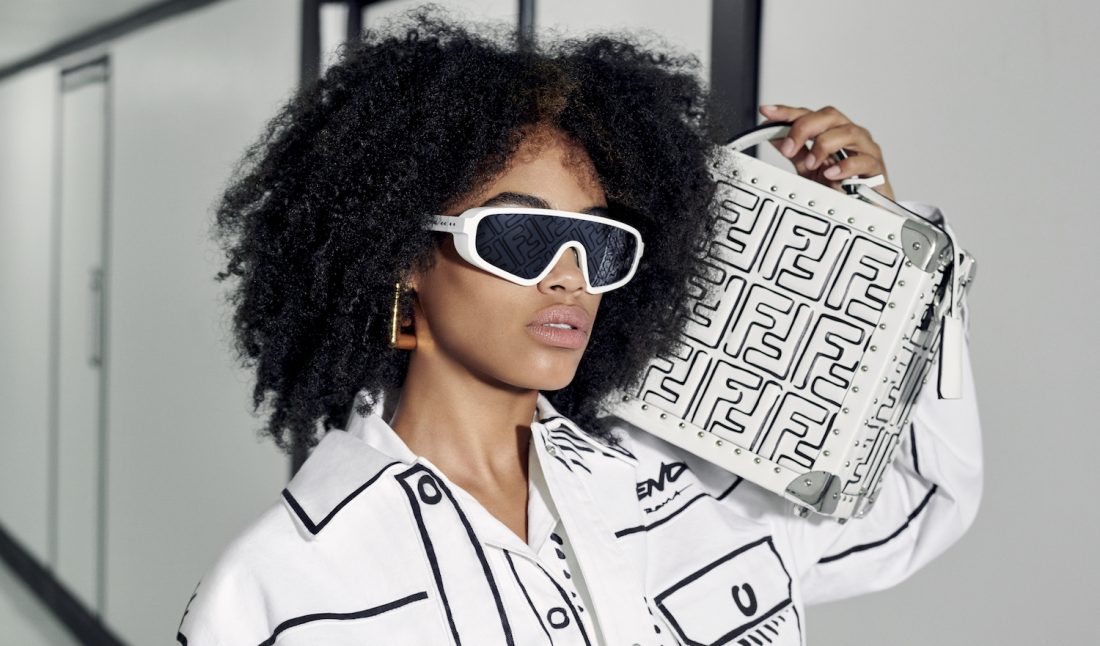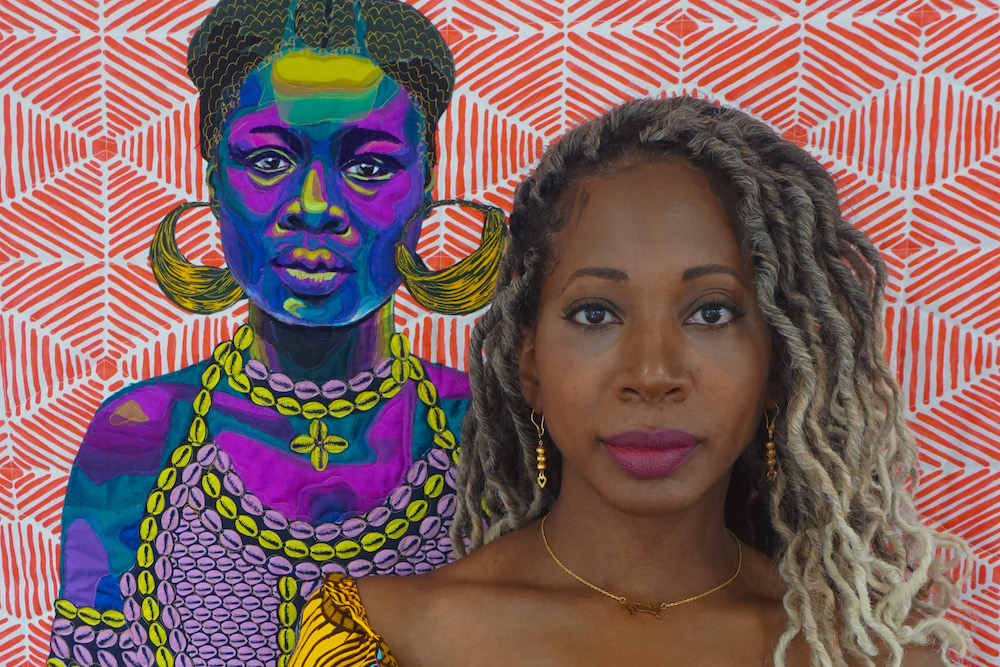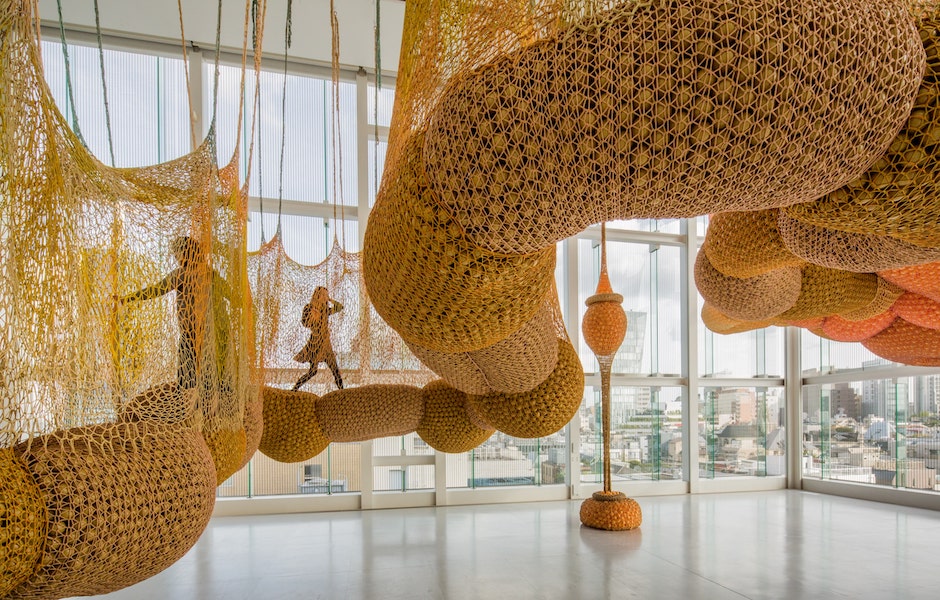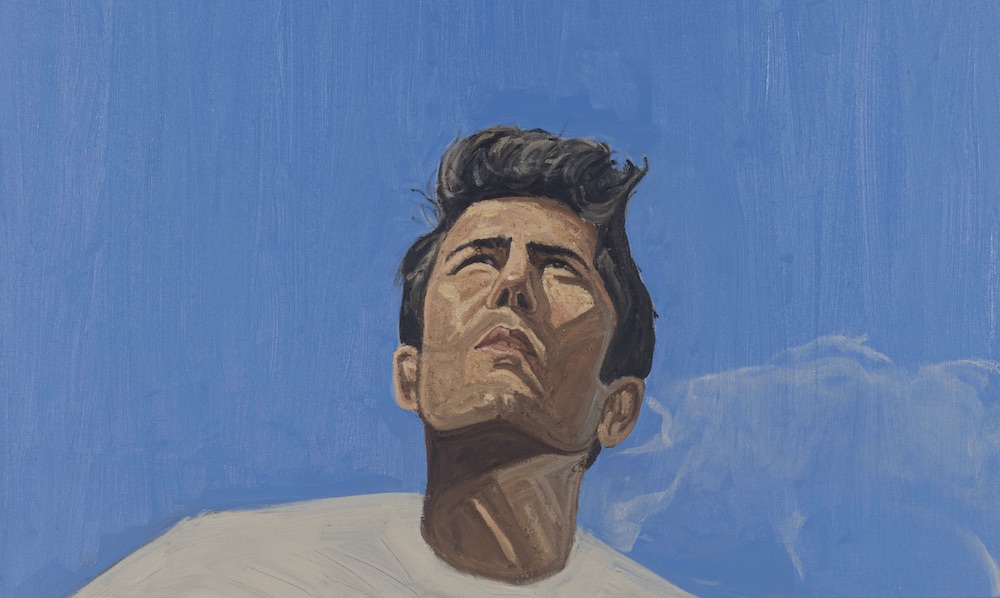Joshua Vides has cultivated a recognizable creative style with only two colors—black and white. With smooth, bold lines, typically drawn on with a thick black marker, the Los Angeles–based artist punctuates blank spaces, bringing an idea to reality. We’ve seen his mark on an array of atypical canvases—shoes, cars, mirrors, and guitars—with outlined details drawing us in. His work has also been the main attraction, inviting the public in to explore immersive sets and scenes like basketball courts, hotel hallways, boutiques, and even chapels in the desert.
For his latest project, he’s collaborated with the luxury fashion house Fendi. Under the design direction of Silvia Venturini Fendi, the brand’s new collection “California Sky” features accessories accented by Vides. Whitewall spoke with Fendi and Vides about working side by side on “California Sky,” how Vides is using color for the first time, and why art is a forever sport.
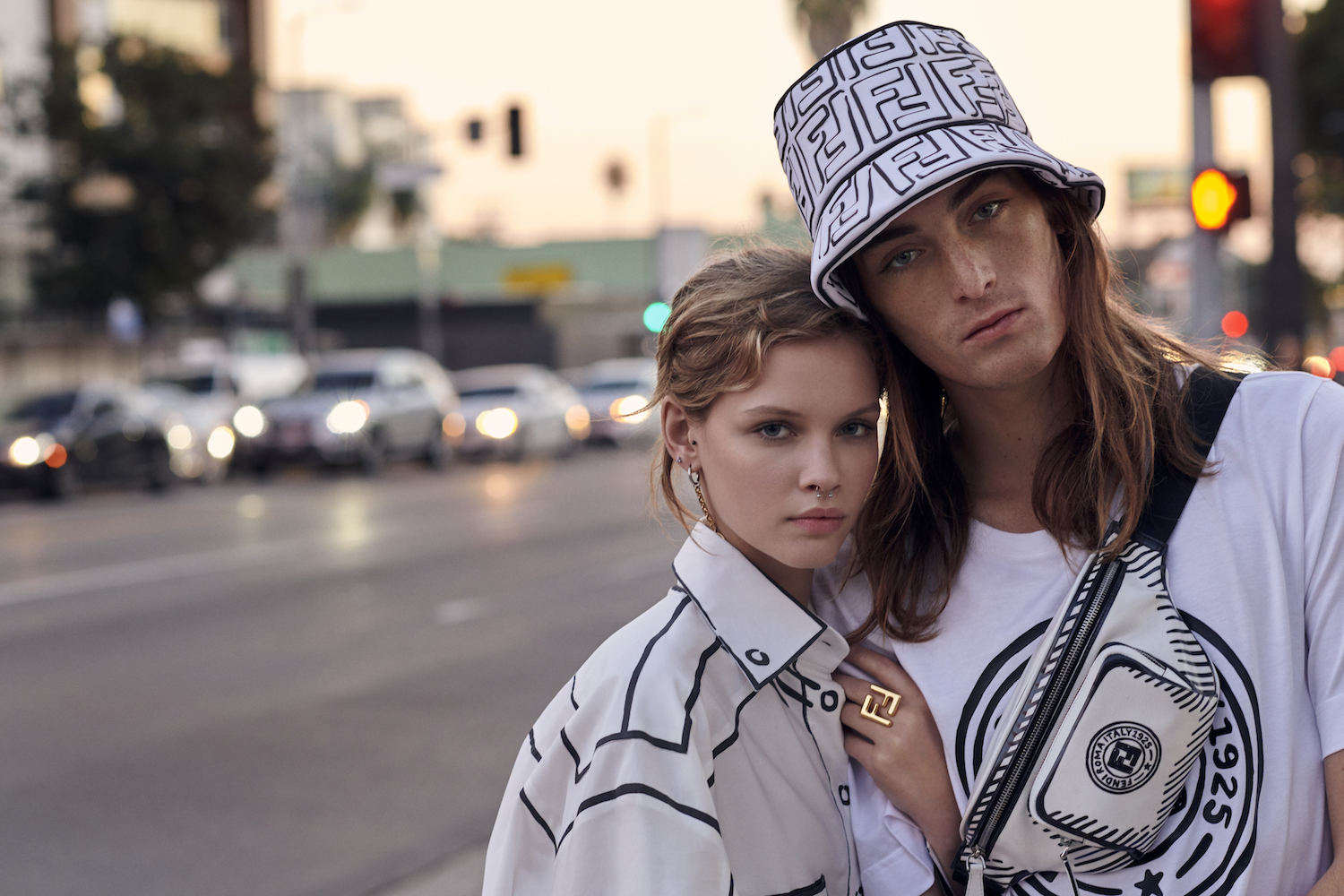 Courtesy of Fendi.
Courtesy of Fendi.
WHITEWALL: Silvia, what initially drew you to Joshua?
SILVIA VENTURINI FENDI: I was drawn to Joshua for the emotion he can show just using a black marker. His art is an entire world.
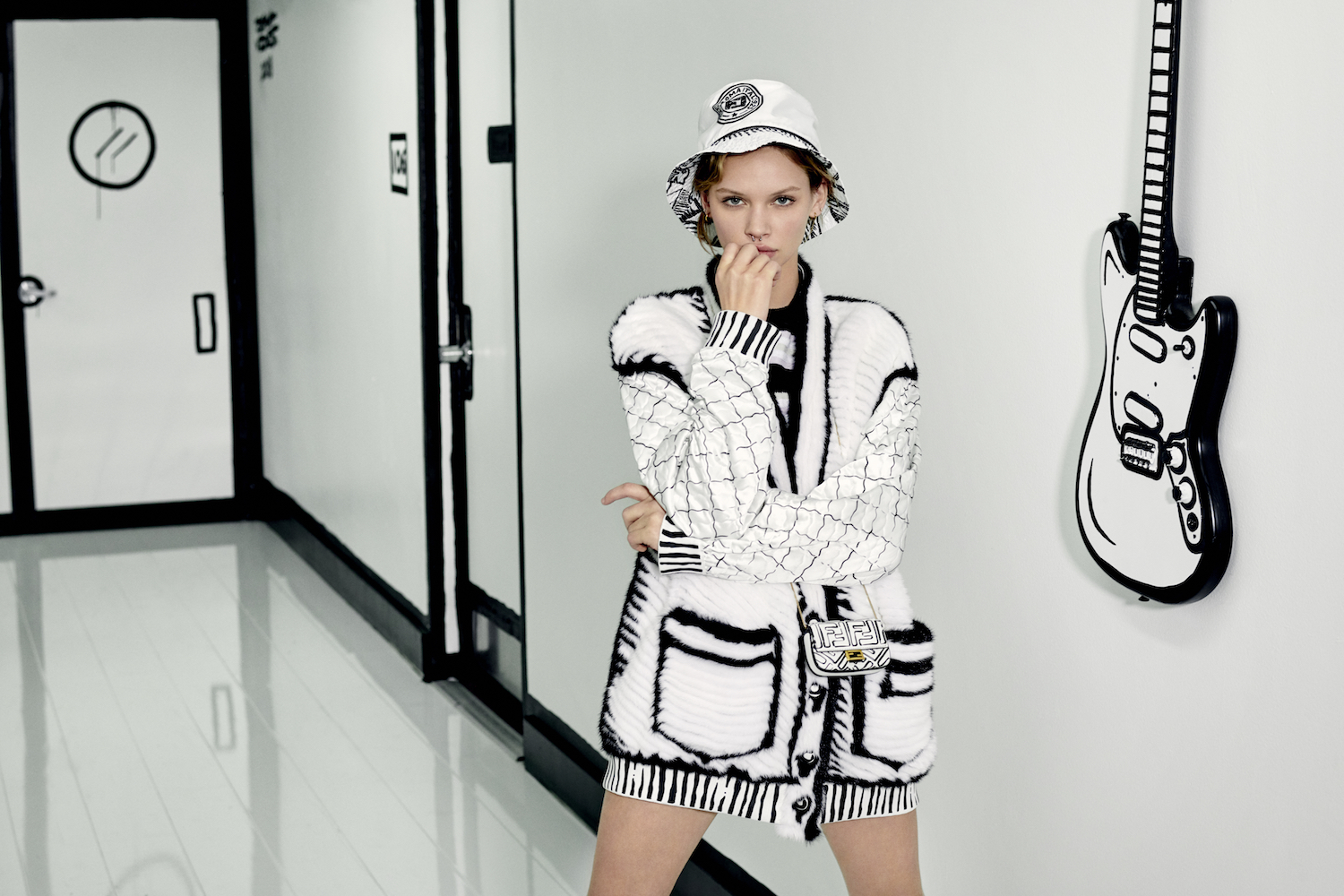 Courtesy of Fendi.
Courtesy of Fendi.
WW: Joshua, tell us a bit about your signature artistic style—black-and-white creations that look 2-D.
JOSHUA VIDES: I’ve titled the concept “Reality to Idea.” Almost everything that surrounds us all began as an idea on a piece of paper, a canvas, a Post-it note. Utilizing the thick black strokes to emphasize the pen or pencil, when painting objects or spaces in this style, drives the mind to view the final object as a fat image due to its contrast and lack of shadow.
 Courtesy of Fendi.
Courtesy of Fendi.
WW: Tell us a bit about “California Sky.” Where did you begin?
SVF: The “California Sky” collection is tailored with a sense of playfulness, and we have integrated pieces more suited for the beach to reflect the California lifestyle. It’s glamorous yet eccentric for the client who wants to have fun.
 Courtesy of Fendi.
Courtesy of Fendi.
JV: I was sitting in a design room with Silvia Venturini Fendi. She made it very clear that the staple logos and patterns needed to be incorporated. After that, she allowed me to draw for hours. She’d come back in the room, see my progress, tell me what she liked, and would let me continue. Knowing this collection would be releasing in the summer, the fower pattern seemed appropriate with a slight color added to resemble the sky, making it the first time I’ve publicly added color to my work.
WW: What does collaborating with a brand like Fendi personally mean to you?
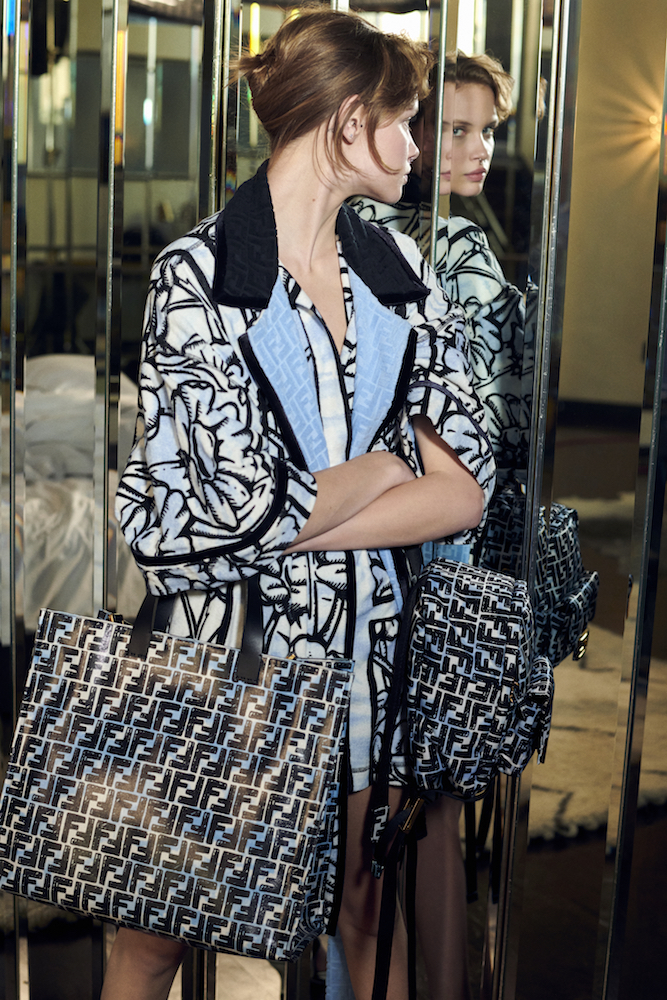 Courtesy of Fendi.
Courtesy of Fendi.
JV: I believe it’s moments like this that I’m able to remind myself that every loss, failure, and wrong decision I’ve made in my career has led me here. Personally, I’m excited to see my work on various mediums I’ve yet to practice with.
WW: Fendi is known for its Italian craftsmanship and rich heritage. What did you want to make sure and highlight from the brand’s DNA with each piece?
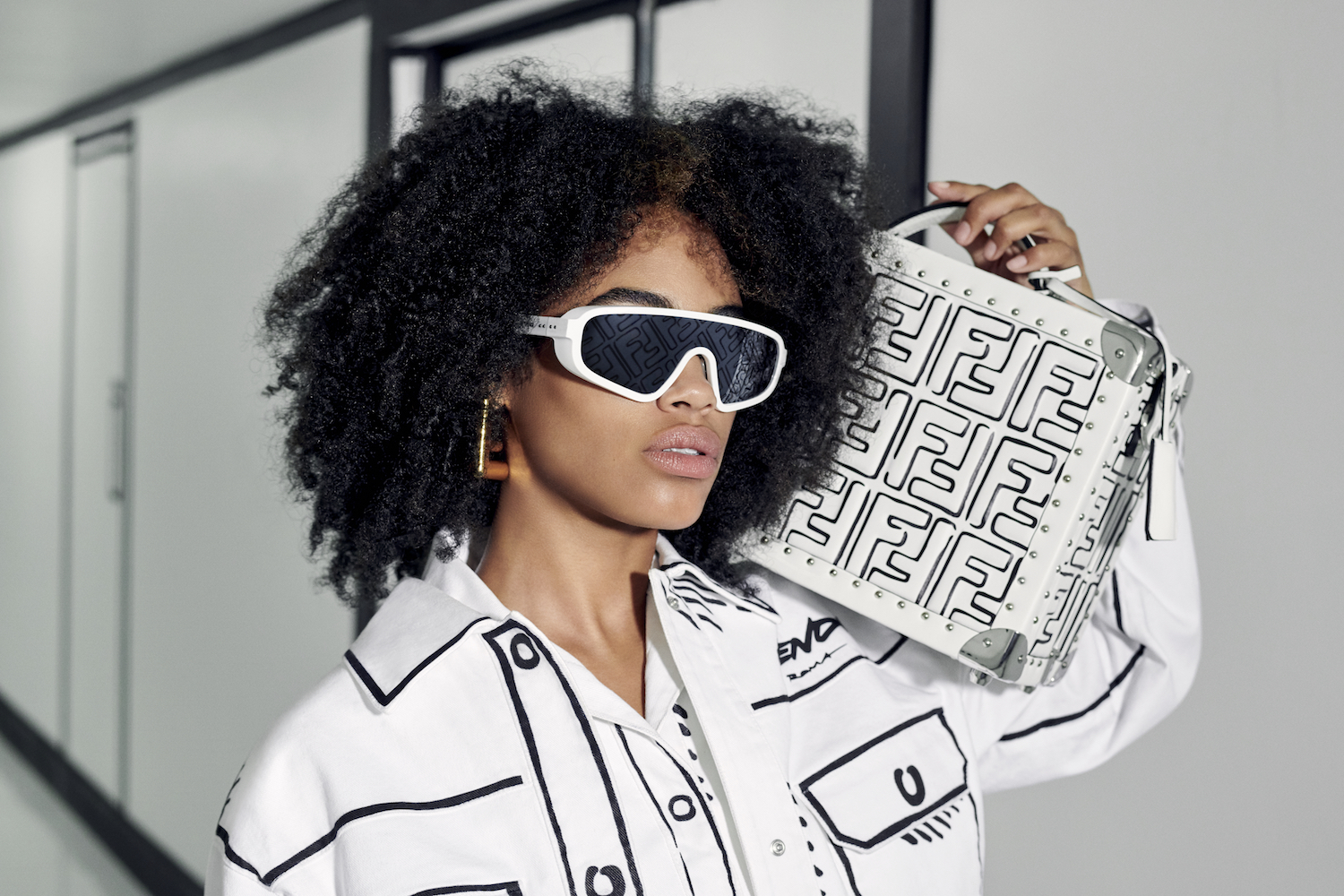 Courtesy of Fendi.
Courtesy of Fendi.
JV: I think the brand’s DNA is what believed in me and my artwork to be displayed on their products. We didn’t need to make sure of anything. The story wrote itself.
WW: Silvia, do you have a favorite piece?
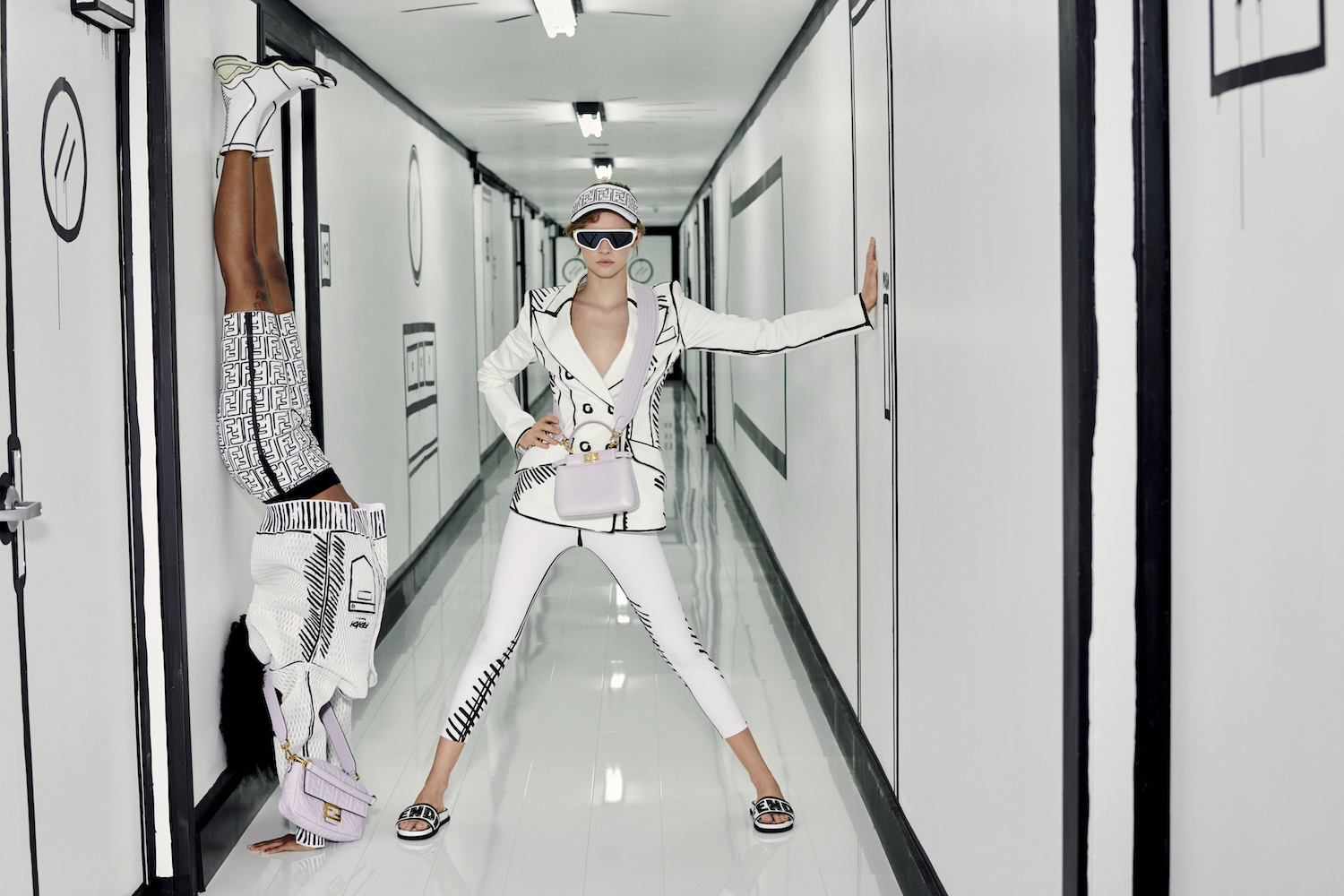 Courtesy of Fendi.
Courtesy of Fendi.
SVF: My favorites are the pieces with the sky backdrops and the little white cotton bowling dress. It feels very cartoonish.
WW: Joshua, you built a portfolio on Instagram and credit the platform for the exposure it has given you. How do you feel social media is shaping the businesses of art and fashion?
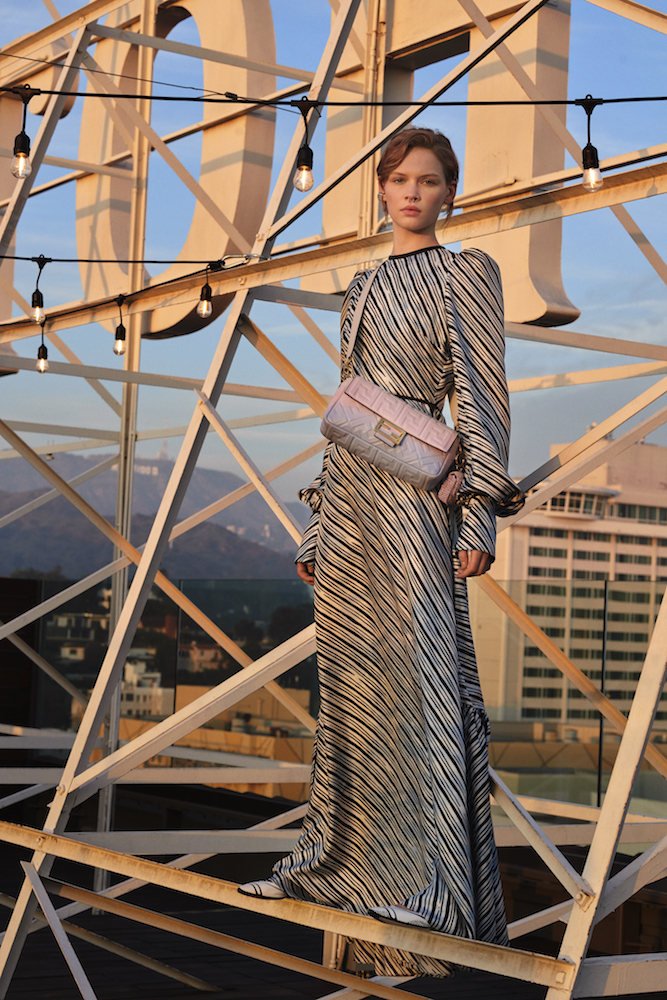 Courtesy of Fendi.
Courtesy of Fendi.
JV: Just like anything else in life, Instagram has its pros and cons. Artists, designers, and creatives in general that know how to use the app as a tool are succeeding because they’re creating a unique world people can click on and relate to. Instagram gives you the opportunity to display your lifestyle or creativity in front of millions in a matter of seconds. People are constantly looking for something new, and tomorrow might just be the day everyone discovers your world.
WW: After you launched your brand in 2009, you began consulting in 2017 and were left exhausted. You mentioned around that time you had an “aha” moment, watching Abstract and seeing Tinker Hatfeld not show his sketches. Afterward, you immediately spray-painted a pair of Reebok shoes white and began drawing on them. It was your first piece. Take us back to that moment and tell us how that shaped you.
JV: I could answer this, but it would take me the rest of the day. I’ll simply say that I was born to create. What is happening now is only one chapter of an extremely long novel. Art is a sport. Some days I’m great and some days I’m terrible. Regardless, I will continue to push my idea of art through my work forever.






